The Arunachala Animal Sanctuary & Rescue Shelter is a nonprofit Trust that solves a difficult and ancient problem in India—the uncontrolled population of “street dogs.” Left alone, the dog population grows fast, and with the existence of rabies, brings a serious health risk to the local people. People fear the dogs because of the real danger of rabies infections. Being afraid of the dogs, people would throw stones, etc. to keep them away. But Indian dogs have lived next to humans for thousands of years.
One way the problem of an uncontrolled dog population has been solved in India is by periodic culls—the mass killing of street dogs. This is often brutally done. There are many horror stories from the past — bounties paid, clubbing, strangling, piles of dog bodies in trucks, some still alive. Since these dogs live on the street, this slaughter was in full sight of all—men, women and children.
Now, in Tiruvannamalai, these dogs can be neutered and given rabies vaccinations. Street dogs are humanely captured, treated, then released back into their original location. The killing wagons are things of the past. This is the work of the Arunachala Animal Sanctuary & Rescue Shelter.
From the founder, Leslie Robinson about their work:
The real specialness of our work is that it has transformed the entire animal scene in Tiruvannamalai. It has dramatically uplifted their quality of life. Well over 250 suffering and dying puppies and dogs on the streets when we opened, (the streets were flooded with them), they are no longer seen. We have 24/7 emergency service that even in the middle of the night if an animal is injured, we will be there in 20 to 30 minutes. Our doctors are on 24 hour call. We have a busy clinic. Full hospital. Attending to all animals. We don’t euthanize, but have hospice. Â Most importantly, the relationship between the homeless dogs and the humans amongst whom they live has been transformed. It is a dramatic change and clearly visible.
Without that transformation the creatures are subject to the same cruelties, the same indifference, the same search for food and water.
At the very core of all our work is demonstrative love–touching, stroking, reassuring, hugging, kissing.
Tiruvannamalai is one of the very, very few municipalities in all of India that has no “Animal Problem”
Here is their facility, on the west side of Tiruvannamalai, across the big empty field on Chengam Road at the corner of Perumpakkam Road.
The local government allows the Sanctuary to operate on this land. Pictured below is the outer wall of the Shelter compound, showing their spirit with a Ghandi saying,
“The greatness of a nation and its moral progress can be judged by the way its animals are treated.”
The Start of the Arunachala Animal Shelter
The story of the Shelter’s start is one of those “Only in Arunachala” tales:
in February of 2006, Leslie Robinson, the founder of the shelter, was visiting Tiruvannamalai and ready to leave for the Himalayas. He heard that they were going to begin killing the dogs, street by street. This would start on Monday. Today was Friday, there was almost no time.
He made phone call after phone call trying to mobilize animal activists around the country. He finally reached Maneka Gandhi in Delhi (of the Gandhi family) perhaps the most effective activist in the country fighting to lift suffering from the animal realm. It was together with one of her main associates in Chennai — a lady whom he came to call “Prema the Tigress” of People for Animals— that they were able to stop the killing. But with the caveat that an effective birth control program had to be put in place. Leslie scrapped his plans to go to the Himalayas.
They had to find a place, land that was suitable. They had to raise money; there was no governmental support available. They had to build a facility, hire and train people, and start a long term effort. Somehow this was done. It seemed like a miracle, like Arunachala itself was helping this happen.
In the waiting area, shown below, founder Leslie Robinson stands, looking over what is happening with the dogs.
The Indian Pariah Dog
Indian street dogs are now being recognized as an ancient group of dogs, called “The Primitive Dog.” This group is often called, “Pariah Dogs.” These dogs are intelligent, alert, sociable, dexterous, able to survive in the tough environments in which they live. They are of different ancestry than the more modern dogs of Europe and Asia that became the contemporary dog breeds. Pariahs are genetically closer to wolves, from which all dogs evolved. Pariah dogs go into heat only once per year, like the wolf. Modern dogs enter into estrus two times each year.
Scientists are still discovering the history and evolution of dogs. Archeological evidence of dogs goes back maybe 15 thousand years or so. But genetic testing of dogs reveals that they broke from the Northern Wolf about 100,000-140,000 years ago. And they think these dogs have been on the edges of human life ever since that time, and have evolved to take advantage of the proximity of man to dog. So the relationship between dogs and humans is really ancient, maybe more than 100,000 years.
The Pariah is an ancient dog family that ranges over much of the planet. This includes North America (where they may have arrived with the Asiatic settlers over the land bridge 15,000 years ago during the last Ice Age. These settlers became the American Indians), Europe, the Balkans, the Middle East (including ancient Egypt where the earliest painting of dogs – the dogs of the Pharaohs – shows this breed standing with the Pharaohs), north and east Africa to Iran, south-east Asia, the Philippines, Australia and New Guinea. Some of these breeds have been officially recognized and are being preserved as primitive regional breeds, such as the Carolinas dog, the dingo, and the Indian pariah. Pariahs are ancient breeds. The dingo, for example, was domesticated, apparently, as early as the later stone age and traveled with man to Australia, maybe 5000 years ago. Then, in Australia, the dingo went wild and lives as a wild animal in all respects. All the pariah dogs have retained their common primitive characteristics for thousands of years. There are those that view the pariah as a representative of an original line of wild dog that is not yet completely domesticated, or one of the “missing links” in the unknown stages of the transformation from wolf to domestic dog. Certainly the pariah dog is very old, surely more than 10,000 years. How far the group has radiated over the world is evidence of its age. Now the modern “purebred” dogs are all younger than 500 years, so in comparison, the Western “pet dogs” are real newcomers on the scene. Most dogs you see here in India, most street dogs, are Indian pariah dogs.
Our first visit to the Shelter
About three years ago, my wife, Carol, and I first had an occasion to visit the Arunachala Animal Sanctuary. There was a litter of six puppies that was born next to our house. We had known them since they were just a few weeks old, and we ended up feeding them all. We knew we couldn’t care for six dogs, so we were grateful to donate three to the Arunachala Animal Sanctuary, where we knew they would be cared for.
After a few months, we still had three dogs: Freckles, Pippi, and Inky, and they needed to be neutered and to get their rabies shots. This is the place to get that done.
In the photo below, Carol is waiting for the dog doctor, holding Freckles in her arms.
Shelter Services
While we were there, we looked around a bit. We saw some of the services that are provided here. From their web site, I see that there are seven main areas of service:
- ABC (Animal Birth Control) Sterilization and Anti-rabies Program
- Small Animal Clinic
- Animal Hospital
- Animal Sanctuary
- Animal Hospice
- Puppy and Kitten Adoption Service
- Animal Emergency Services, 24X7
The photo below is, I think, of an emergency service. The dog was brought in, injured, starving, and with a terrible skin problem. The dog waits quietly for care. The loving way in which the dogs are treated makes them calm, and much easier to work with. This loving care is may be the key element in everything that is done here.
This being South India, there is a nice altar in the waiting area, featuring photos of saints like Sri Ramana Maharshi and Satya Sai Baba.
One of the Shelter’s 18 workers looks in on us. He is holding a puppy. I see a lot of dogs being held here.
Later Visit to the Arunachala Animal Shelter
I returned to the Shelter recently, to look around, to talk to Leslie, and to take photos. I had heard of their plight with funding, and thought I wanted to help, by writing a story that can be read by those who love Arunachala and Sri Ramana Maharishi.
The Shelter is quite full of dogs right now. There are more than 150 dogs here today. It is just before Deepam, and the local authorities have asked the Shelter to pick up and house a number of dogs from Arunachaleswara Temple and Pradakshina Road, to make life easier for the 2,000,000 pilgrims that are expected to visit during Deepam. In addition, this is a big puppy season, and they have 58 puppies right now.
It is feeding time, and many of the dogs in the care area are eating.
I think the diet is mainly rice and milk.
There is a dog in the emergency care area. Dr. Raja is looking after it. It has been in an accident, and its forelegs suffered much damage, but thankfully are not broken. The dog is calm and quiet. This is amazing to me because all of the trauma he has been through: the accident, then waiting in pain, then being “captured” by the people who brought him to the clinic, then on the table being worked on by all the strange people. But the dog has been shown so much care along the way that it is calm, taking the treatment easily. I am not sure that I would be so calm if all that had just happened to me.
The injured dog gladly takes some stroking from Leslie.
A sign asking those who can pay for services to do so. I think most of their services are not paid for, like all care for street dogs: emergency, spay and neuter, rabies vaccinations, skin disease and even cancer treatment.
Here is a doggie, crippled and recovering from a terrible skin infection. Notice its lame back legs. They never euthanize dogs here. They will not put this dog out on the street again. They will take it into their sanctuary program. Sometimes they are able to treat even crippled dogs like this, and they are able to walk again. It is very good care that is given here.
This was a sweet friendly dog. Leslie said that when it came here, it was one of the most vicious dogs that they had seen. For the first month it just stayed by itself by a wall. After that it has become less fearful and relaxed to become more trusting and like a normal dog. They think the dog had been beaten badly.
Leslie is holding another “vicious” dog. Not dangerous now.
A puppy in a worker’s arms.
Below, a few of the 50 puppies, in a “puppy pile,” one of many here today. They are on a cushion under a sink in the emergency care area. So many puppies are here now that every spot available is used.
Some of the medications in the care area.
These are not puppies, but they are still in a pile.
This is Vishwa. He is one of the main people at the Shelter, operations manager I think. He does most of the captures, like catching street dogs for neutering and rabies shots. Leslie says that the care really starts with the capture, which is loving and gentle. Many times this may be the first time that the locals have seen dogs treated gently. The Shelter workers think is important to give the local people different models as to how to treat dogs, to make them their friends rather than see them as dangerous and enemies.
Another dog has been brought in. This one is so injured that it probably will not live. Leslie gives loving attention to it.
This is the intake quarantine area. New dogs are kept here for a while to make sure they are not carrying dangerous infectious diseases.
In a corner are a few puppies and their “wet nurse” mother dog. These are not her puppies, but she is nursing them. They are so young that this is still needed.
A dog asleep in its quarantine cage.
The dog below is in very bad shape. A worker stays with it, so it does not need to be alone and afraid. A big part of the care, says Leslie, is emotional care of the animal. These are sensitive emotional creatures, as any dog lover already knows. Giving this kind of care makes the animals heal better and recover faster.
Another pile of puppies.
Another dog in the arms of a worker,
This is the main operating theatre. Notice on the left side are more puppies.
In among these puppies is a kitten.
Below is a dog recovering from starvation and an extremely bad skin problem. It will heal with the care given here. Then they will return it to the same spot where they picked it up for care. These dogs are territorial, and live somewhere among a group of friends, other dogs and maybe people. To care properly, you need to return them to their home territory.
In the back is a big open area. This is where the 28 dogs that are long term residents live. They keep only those dogs that cannot survive on their own, like ones that are blind or crippled.
Dogs being helped because of Deepam are here. These are from the Pradakshina route.
Happy dogs interact with a worker.
Dogs from Arunachaleswara Temple being held.
This one has some kind of mouth cancer. They are pretty successful treating canine cancer. Some get operations, then chemotherapy, some just chemo therapy alone.
Dogs sleeping quietly in the “residential dog” area.
The kind of care given here could be a model for India: take care of dog overpopulation in a way that improves everyone’s life, by caring rather than killing.
Photos from the Arunachala Animal Sanctuary archives
Here are more examples of care given at the Arunachala Animal Sanctuary & Rescue Shelter. These photos were given to me by Leslie.
Two workers examine a dog that has just been brought in,
Workers hug. This shows the spirit of the workers.
The primary veterinarian, Dr. Raja, standing with another worker holding a kitten.
Leslie with another dog, up close and personal.
A cute litter of puppies. One big service that is done is to arrange puppy adoptions. Hundreds have been put into homes. They offer lifetime free medical care for all adopted dogs.
Here is a dog with the worst case of fluid in the abdomen that I have ever seen. She is swollen like a balloon.
The fluid is drained. She is almost starved.
A dog with a dislocated jaw.
Now fixed. What a relief!
This dog got its head somewhere that it was not supposed to go.
After carefully sawing the wheel off, not a scratch on the doggy.
Here is another rescue, head injury, skin problem over its body, too.
Almost healed. The body and fur look fine now. The head injury is almost healed.
Dogs with terrible mange. There looks to be no fur left.
Same dogs after treatment.
I can’t stand to look at this picture of the hurt puppy. I think it was hit by a motorbike.
He doesn’t look so bad now. You can see the stitches on his rear.
This dog has a spinal injury, received in an accident. It would surely be “put down” in the USA.
Here the same dog is standing and eating. It still had a bit of a limp, but was fully functional and mobile.
For puppies, direct contact is needed most. Here is one dog, helping another.
A dog with allergies. I did not even know that they got allergies in the first place.
Loving care being given to dogs.
Puppy with an IV sleeping on the caretaker’s arm.
In the operating theater.
Giving a dog a bath. They do this every two weeks.
Dog being treated for a snake bite on his mouth.
Open clinic at the Arunachala Animal Sanctuary.
I don’t know who is sleeping better, Leslie or the pup.
Children everywhere love puppies. In India they have to be shown that they do not need to be afraid of them before they can love them.
Puppies, we all love puppies, young …
…and old.
All Creatures Great and Small
One of the most surprising things to us about the Shelter is the wonderful work they do with other animals, not just dogs and cats.
Here is a young Macaque monkey being cared for. They have named it Amul.
A Macaque sleeps on Leslie. Is this Amul?
Adult male Macaque with a bad arm wound.
Stitched up, ready to heal. They care for all these animals until they heal. Then they return them to the environment where they found them.
This is a “mountain monkey,” a Langur. I don’t know what happened to its side.
Now healing. He wants to get back to the mountain, I think.
Geese in for treatment. You can see the fluid coming out of the beak of the one nearest the camera.
A chick with a broken leg.
Now the leg break is set, and a cast is put on so that it will heal.
A calf with a broken leg.
Now in a cast.
This is a terrible leg wound…
…of a spotted deer, found in the forests next to Arunachala. (I have seen deer many times in my morning walks.)
A donkey with a leg wound.
Now it is taken care of and just has to heal.
A parakeet with a broken wing.
A worker with a young mountain monkey.
This is a wild heron, in for emergency care.
Wild chipmunks are sometimes cared for. Here is a chipmunk house.
This girl has a chipmunk in her hand.
These are tiny babies.
An eagle, electrocuted by a power line.
Baby birds in “Feed me” position.
They even gave emergency care to this hippo!
Among the birds cared for was this owl.
The owl sees you.
Peahen in for emergency care.
Calf with casts on two broken legs. Accident with motorbike.
Not sure what the bunny’s problem is, pink eye?
Vishwa is with a monkey baby and a puppy. Both animals have splints over broken bones.
One thing that the Arunachala Animal Shelter does regularly is go to schools and teach about dogs and other animals.
Here is Leslie with some of the Shelter’s trustees; Kumar, Hari, and Apaji Rao, the vice chairman.
Here is the whole facility shortly after it was built. Arunachala is in the background.
Good Works Done by Arunachala Animal Shelter
Amazing work is done here. Since founding they have:
- Performed 5,000 ABC Sterilizations.
- Given over 8,000 anti-rabies injections.
- Had over 17,000 out-patient visits to our clinic.
- Given over 45,000 in-patient treatments.
- Found good homes for over 500 puppies.
- Made over 1,000 rescues.
- Treated over 1,600 animals other than dogs: cats, cows, bullocks, monkeys, goats, sheep, birds, peacocks, eagles, squirrels, chickens, turkeys, owls, horses, and snakes.
Ramana Ashram has written a letter of appreciation for the Arunachala Animal Shelter that encourages donations. Here is a copy:
Critical and Urgent Need for Financial Support
Note that the Arunachala Animal shelter is in critical need of financial support. Since its founding, more than half of the donations have come from one organization, which is unable to give this year. No financial support has ever been given from the local government, even though much public good is accomplished by the work done here. The financial situation is critical. Their operating budget is about $8000 per month (rs 400,000). One time donations are appreciated. Best though, are ongoing commitments, even $100 or $200 per month is a big help. To find out how to donate, go to their Donation Page. Donations are encouraged by Ramana Ashram, so you know that it is a worthwhile cause.
For more information:
Here is their web site: Arunachala Animal Sanctuary & Rescue Shelter. You can also email them at arunachalashelter@yahoo.com.
Here is a short video about the Shelter. To see a listing of more videos, follow this link.
Tags: Arunachala animal sanctuary and rescue shelter, canine care, dogs, population control
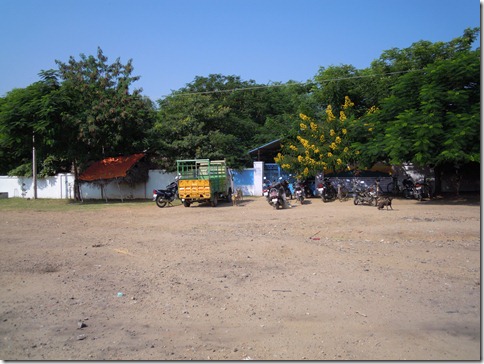















































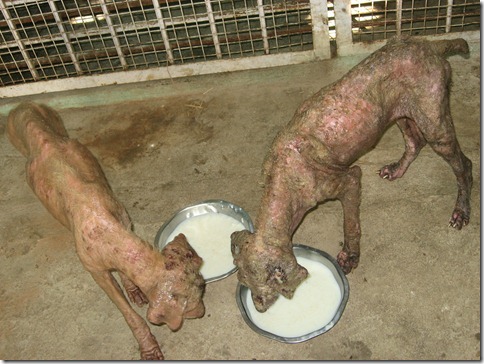









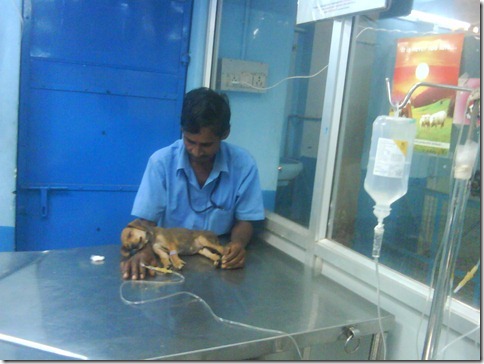




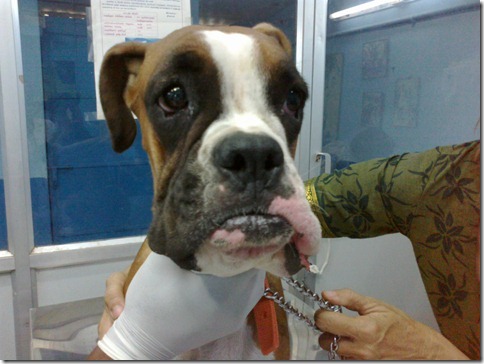

























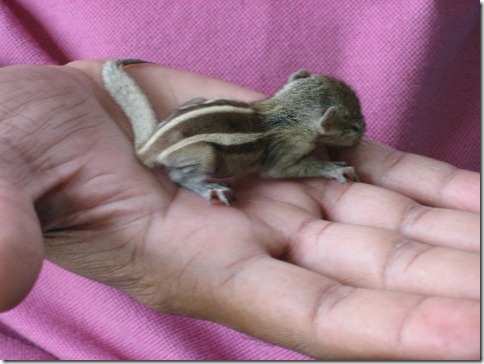




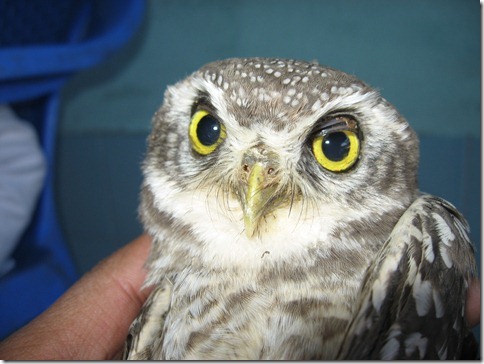








December 11, 2012 at 6:52 am |
Thanks Richard for letting us know about their need. Will do what we can and let others know…..shanti…
December 11, 2012 at 8:17 am
Letting other know about what they do and their present need is important right now. This is an important time for them as their funding is running out. Pass along the link to the blog post.
December 11, 2012 at 1:22 pm
Definitely will pass it along…..have a dog lover friend who use to live in Tiru but now lives in Switzerland, sure he will contribute and will send this to others as well.
December 12, 2012 at 8:11 am
Good. This passing along of the link to the story is one of the ways we can help the shelter. And it is such a special place in all the world.
December 13, 2012 at 3:50 pm
That’s for sure Richard…..already passed on the link….om shanti….
December 7, 2012 at 7:50 pm |
Thanks for detailed blog on the animal shelter.
Despite the neutering and spaying programme why are there so many piles of puppies?
December 7, 2012 at 8:32 pm
There are many puppies now since the only have puppies once a year, and this is the time. The neutering has not been done on all dogs, just enough to control the growth of the population.
December 5, 2012 at 10:43 am |
What a wonderful blog. Thank you so much for posting this. I can tell you from firsthand experience that this shelter is among the finest I have ever seen, if not the finest. That is because it is run on demonstrative love. This changes everything: the animals, the caretakers and the community at large. I have seen the change over seven years in Tiru. Truly remarkable what Leslie, Vishwa, Doctor Raja and all the staff have done and continue to do. Please keep up this amazing, life changing work.
December 5, 2012 at 12:43 am |
Ramana set a tremendous example with his great Love of animals so it’s nice to see people caring about the critters we share this planet with. I have always liked what Gandhi said….“The greatness of a nation and its moral progress can be judged by the way its animals are treated.”